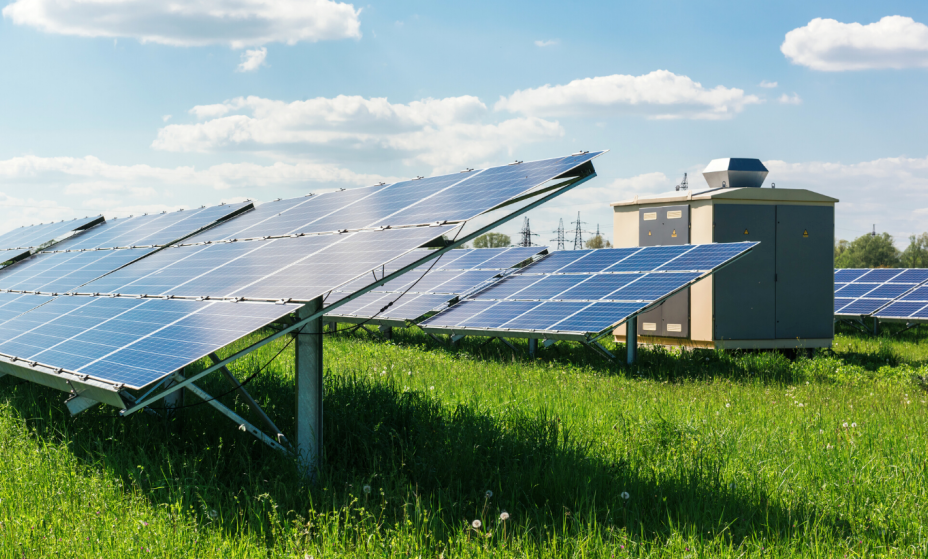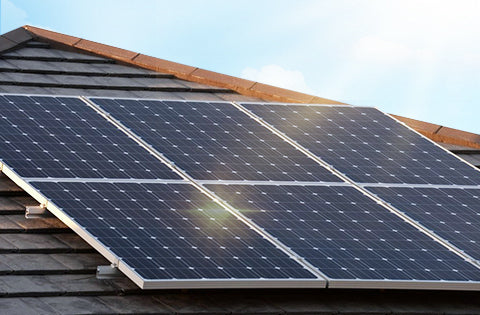Solar energy is positioned for rapid growth in coming years. In fact, the US has over 72 gigawatts (GW) of high probability solar additions planned for the next three years, which would nearly double the total capacity currently on the market.
With solar becoming a dominant player in a clean energy future, it’s fair to wonder what the carbon footprint of solar panels is. Is solar energy that much cleaner than fossil fuels like natural gas and coal?
In this article we’ll explore the life-cycle carbon emissions of solar panels and how they compare to other sources of electricity. Then, we’ll look at the opportunities to decrease the carbon footprint of solar panels even more.
Let’s dive in with the big question: What is the carbon footprint of solar panels?
What is the carbon footprint of solar panels?
There have been many studies on the carbon footprint of solar panels with varying results. The Intergovernmental Panel on Climate Change (IPCC) found the median value among peer-reviewed studies for life-cycle emissions for rooftop solar is 41 grams of CO2 equivalent per kilowatt hour of electricity produced.
That’s quite a mouthful – what does it mean?
First off, life-cycle emissions refer the total emissions – from mining to manufacturing to installation to maintenance to disposal – associated with creating energy. This measurement is standardized into grams of CO2 equivalents to account for the various types of emissions and their warming impacts.
For a rooftop solar system with a 30-year life, the total emissions associated with generating 1 kWh of electricity add up to 41 grams of CO2 equivalents – roughly the mass of a medium-sized chicken egg. That’s nearly 12 times lower than natural gas and 20 times lower than coal.

Let’s put that into perspective.
Carbon footprint of solar vs coal vs natural gas
Carbon emissions can be tough to visualize, so let’s picture them as medium-sized chicken eggs.
As another reference, one kWh is roughly what it takes to power a fridge for one day. So, the chart below shows you how many eggs-worth of carbon emissions it requires to power your fridge for a day.

Now, let’s say you use 15 kWh of electricity per day. And for every kWh of electricity you use, an egg appears in your refrigerator. After four days, you’d have:
5 dozen eggs if you’re running on rooftop solar
60 dozen eggs if you’re running on natural gas
100 dozen eggs if you’re running on coal
Can you imagine trying to deal with 1,200 eggs every four days?
Of course, carbon emissions aren’t eggs, and they have detrimental effects on human health and climate change. And unlike fossil fuel energy, which is always going to produce carbon emissions, there are many opportunities to lower the footprint of solar panels even further.
How to lower the carbon footprint of solar panels
The IPCC puts the carbon footprint of rooftop solar at 41 grams of CO2 equivalents per kWh of electricity produced. But that number is not etched in stone.
In fact, there are many ways to reduce the carbon footprint of solar panels (and it’s likely already come down since the IPCC reported the 41 grams figure back in 2014).
According to the National Renewable Energy Lab, life-cycle emissions can be divided into three buckets:
Upstream processes
Operational processes
Downstream processes
There are opportunities at each stage to lower the carbon footprint of solar panels.

Reduce upstream emissions
The carbon footprint of manufacturing solar panels accounts for roughly two-thirds of the life-cycle emissions of solar energy.
This includes processes like extracting raw materials, manufacturing equipment, and constructing the manufacturing plants themselves. These processes have historically been powered by fossil fuels. However, as we transition to renewable energy, we can reduce these emissions and the carbon footprint of manufacturing solar panels.
In other words, we can use clean energy to create cleaner energy.
There are also ways of converting existing infrastructure into solar manufacturing, like turning a 118-year-old steel processing plant into a solar torque tube factory.
Finally, we can make manufacturing processes more efficient. For example, researches are exploring ways to upcycle “silicon powder” waste created during solar panel manufacturing to reduce the need for extracting raw materials and the associated emissions.
Operational processes
Operational emissions refer to the carbon footprint of solar panels once they are installed and operating. These emissions are minimal, especially with rooftop solar systems that require virtually no maintenance and transmission.
Even so, the operational emissions per kWh of solar panels can be lowered by increasing their solar output. And there are few ways to do this:
Install solar panels in areas with maximum sun exposure
Increase the efficiency of solar panels
Keep panels in operation longer than 25-30 years
Combine solar panels with agriculture (agrivoltatics) to increase carbon sequestration and food production
Float solar panels on reservoirs (floatovoltaics) to reduce water loss, increase panel efficiency, and utilize existing transmission infrastructure
The good news is that solar panels are becoming more efficient and lasting longer than expected, thus reducing their carbon footprint. In fact, a 40-year-old rooftop solar panel in Vermont is still operating at around 92% of its original output.
Downstream processes
The smallest chunk of the carbon footprint of solar panels is due to the downstream emissions of deconstructing and disposing of solar systems.
You guessed it – there are ways to reduce these emissions, too.
The biggest opportunity is in solar panel recycling, an industry that is poised for rapid growth in this decade. Over 90% of the materials used to make solar panels can be recycled, including the aluminum frame, glass cover, copper wire, silicon wafer, and plastic junction box.
Recycling these materials would not only decrease downstream emissions, it reduces the need for raw materials, thus decreasing upstream emissions, too.
Does going solar reduce your carbon footprint?
Installing solar panels on your home is a very effective way to reduce your carbon footprint. Although there are carbon emissions associated with manufacturing solar panels, these are quickly offset once they are installed and operational.
Depending on your local electricity mix, it typically takes 2-3 years for solar panels to offset their life-cycle emissions, leaving decades of clean power generation, water conservation, and energy cost savings.
Although there is a carbon footprint associated with solar panels, the life-cycle emissions of solar electricity is around 12 times less than natural gas and 20 times lower than coal. And unlike burning fossil fuels, there is tremendous potential to further reduce the carbon footprint of solar panels. These include powering manufacturing on renewable energy, recycling materials, and increasing the efficiency and longevity of solar panels.
Ready to save money and reduce your carbon footprint? Start your solar journey with multiple quotes from vetted installers.
To learn more about photovoltaic power generation, please follow SOLARPARTS official website:
Twitter: Solarparts Instagram: Solarparts
Tumblr: Solarparts Pinterest: Solarparts
Facebook: Shenzhen Solarparts Inc
Email address: Philip@isolarparts.com
Homepage: www.isolarparts.com




